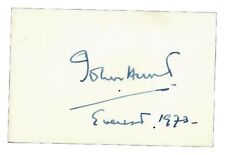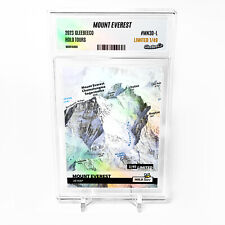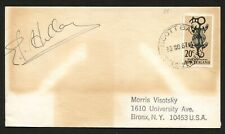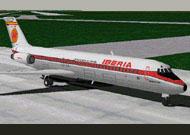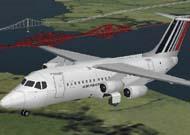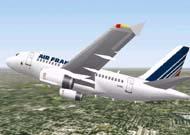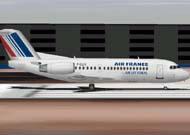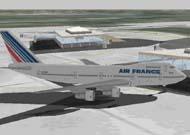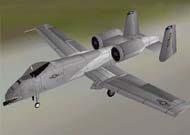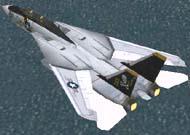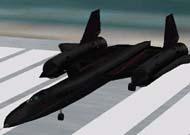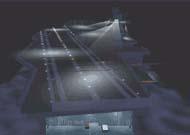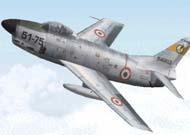When you click on links to various merchants on this site and make a purchase, this can result in this site earning a commission. Affiliate programs and affiliations include, but are not limited to, the eBay Partner Network.
Up for sale "Mount Everest Explorer" John Hunt Hand Signed 3X5 Card. This item is certified authentic by Todd
Mueller Autographs and comes with their Certificate of Authenticity.
ES-3148
Brigadier Sir Henry
Cecil John Hunt, Baron Hunt, KG, CBE, DSO (22 June 1910 – 7
November 1998) was a British Army officer who is
best known as the leader of the successful 1953
British Expedition to Mount Everest. Hunt was born
in Simla, British India on 22 June 1910,
the son of Captain Cecil Edwin Hunt of the Indian Army, and a
great-great-nephew of the explorer Sir Richard
Burton. His
father was killed in action during the First World War. Hunt, from the
age of 10, spent much holiday time in the Alps,
learning some of the mountaineering skills he would
later hone while taking part in several expeditions in the Himalayas while serving in India. He made a
guided ascent of Piz Palu at 14. He was educated the Royal
Military College, Sandhurst, where he was awarded the King's Gold
Medal and the Anson Memorial Sword. After Sandhurst, Hunt
was commissioned as a second lieutenant in the King's Royal
Rifle Corps (KRRC)
on 30 January 1930. Among his fellow graduates were Charles Harington and Alan Brown. In
1931, the regiment was posted to India. He was promoted lieutenant in 1933. Despite his
background he seems not to have been entirely comfortable with the prevailing
social climate of the Raj. He preferred rugby to polo,
and having already gained fluency in German and French he 1934 he became the Indian Army, with the local rank of captain, and was seconded to time the Indian
independence movement was gaining ground, and Bengal was particularly affected. Hunt
even worked undercover, gathering
intelligence in Chittagong while dressed in local clothing. He returned to
his regiment in 1935, having been awarded
the Indian
Police Medal. Throughout
this period Hunt continued to climb in the Himalayas. In 1935, with James Waller's group, he
attempted Saltoro Kangri, reaching 24,500 feet
(7,470 m). This exploit led to his election to the Alpine Club and the Royal
Geographical Society. He applied to join the 1936
Everest Expedition, but was turned down when an RAF medical
discovered a minor heart problem. He married Joy Mowbray-Green on 3 September
1936, and she also took part (along with Reggie Cooke), in Hunt's 1937 Himalayan trip which
included reconnaissance of Kangchenjunga, the south-western
summit of Nepal Peak, and only the third ascent of the Zemu Gap, between Kangchenjunga and Simvo. Here they saw tracks that one of the
party's Sherpas told them were those of the Yeti. In
1938 he returned for a further period of secondment in Military
Intelligence, being employed on the staff at Supreme Headquarters Allied Expeditionary Force (SHAEF) when he
received the surprise invitation to lead the 1953 British Mount Everest expedition. It
had been expected that Eric Shipton would lead the
expedition, as he had led the (unsuccessful) British
attempt on Cho Oyu the previous year from which the majority of
the climbers were drawn. However, the Joint
Himalayan Committee of the Alpine Club and Royal Geographical
Society that oversaw British attempts on Everest decided that Hunt's military
leadership experience and undoubted climbing credentials would provide the best
hope for success. It was felt to be critical that this expedition should be
successful as the French had permission to mount an expedition in 1954 and the
Swiss in 1955, meaning that the British would not have another opportunity
until 1956 at the earliest. Many members of the expedition felt a strong
loyalty to Shipton, and were unhappy with his replacement. Edmund Hillary was one of those
most opposed to the change, but was soon won round by Hunt's personality and
frank admission that the change had been badly handled. Hunt planned for
three assaults of two climbers each including "a third and last
attempt" if necessary, although after two consecutive assaults a wait
would be necessary to "recover our strength" and to replenish the
camps. Base Camp was established on 12 April 1953.
The next few days were taken up with establishing a route through the Khumbu Icefall, and once opened, teams
of Sherpas moved tons of supplies up the mountain. A succession of advanced
camps were created, slowly forging higher up the mountain. By 21 May, Wilfrid Noyce and Annullu had
reached the psychological milestone of the South Col. Hunt had selected two climbing pairs to
attempt the summit. The first pair (Tom out on 26 May but were forced to turn back after becoming exhausted high on
the mountain. On the same day Hunt himself climbed to 8,350 metres
(27,395 ft) with Da Namgyal Sherpa to leave a cache of equipment on the
Southeast Ridge for the second summit party. On 28 May, the expedition
made its second assault on the summit with the second climbing pair. The summit
was eventually reached at 11:30 am on 29 May 1953 by the New Zealander Edmund Hillary
and Sherpa Tenzing Norgay from Nepal
(Norgay had previously ascended to a record mark on Everest with a Swiss
expedition of 1952). News of the expedition's success
reached London on the morning of Queen
Elizabeth few days later, they discovered
that Hillary had been made a Knight Commander of the Order of the British Empire and Hunt a Knight Bachelor for their
efforts. He received his knighthood on his return to London in July
1953. Further honours were showered on Hunt and the expedition team:
the Hubbard Medal of the National
Geographic Society, the first time the medal was awarded on a
collective basis, though individual bronze replicas were made for Hunt, Hillary
and Norgay; the Founder's Medal of the Royal
Geographical Society; the Lawrence medal of
the Royal
Central Asian Society; and honorary degrees from Aberdeen, Durham, and London universities.
View more great items




